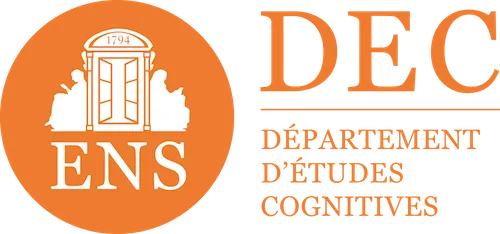

What does digitalizing your training courses consist of?
Today, organizations use a multitude of training materials and the range of possibilities can seem exhilarating. Because they were aware of the richness and diversity of these supports, many companies jumped at the opportunity to make them available to employees online. But here's the thing, sometimes we miss someone (the learners) or something (educational thinking) and we throw ourselves headlong into the simple transposition of an already existing training course, but which does not hit the mark. So, how can we go about impacting learning and promoting skills development? How do you find your way around, as a trainer? Survey on the real prerequisites for the digitalization of training!
Obstacles to overcome to transform existing training into digital training
La digitalization of a training course is a process involving the questioning of a host of preconceived ideas and preconceived ideas: organizations, training services, trainers and companies are well aware of this! First hurdle to overcome? The transition from a traditional form of learning to one or more numerical pedagogical modalities. Sometimes too fast or too brutal, what we call “digital acculturation” would almost make us forget certain issues related to learning pace of an employee, at theInteractivity of a content, or simply, to the work of pedagogy to be provided.
Digitalization should not be considered as a lifeline or a replacement solution, quite the contrary. This “learning” added value makes it possible to consolidate, complement and boost existing teaching methods within a structure, regardless of its size and field of activity. Indeed, learning, including asynchronous e-learning, cannot do without a reference teacher or trainer. To counter the obsolescence of skills, you must be able to keep up with the times, and to optimize the development and management of training.
Today, many learners regularly consume content on the Web for personal reasons, for their own pleasure, or simply out of curiosity. In this logic of continuity, of desire to learn and to train, it is important to address the pedagogical problem of the digitalization of a training course, in order to arouse their involvement and their motivation. For the trainer, the HR department or even the training department, it seems necessary to help internal teams as well as learners in the process of assimilating new tools but also new learning methods. As for the training teams, they must succeed in transform their work habits, to be able to integrate digital technology into their training courses.
Digitizing your training courses: who are the false friends of the training designer?
Beware of the funny noises that are out there! No, it is not enough simply to host your content and give access to it to your employees so that they consult your courses with more enthusiasm than before: slides that scroll, Word or PDF documents unrolled page by page on the screen, video formats... So get rid of false friends from your path!
Communication of available resources
In person, trainers generally rely on slide-type materials. As part of an e-learning course asynchronous, they are turning to PDF documents or video tutorials. Here, the trap would be to believe that successful communication helps you to digitize your training courses with confidence, in order to involve your learners in every part of your learning journey. Unfortunately, the mere dissemination of these resources is not enough: invitation messages sent to employees, variation of communication channels, reminders, integration into other training methods...
These are all tools dedicated to increasing the number of registrants that, unsurprisingly, will not generate commitment or progress for those who complete the course. This way of learning, which is too passive, does not stimulate memorization or the transfer or mobilization of knowledge in the workplace. These resources will be consulted just as much as when they were sleeping in the files of an organization trainer.
Inappropriate content transformation
The transformation of training content is used incorrectly, since very often, it does not correspond to the objectives of the trainer or training manager, this metamorphosis is not likely to produce miracles. Some will think that by adapting a few slides to the format of a motion design video, the deal will be in the bag. Another false “good” solution that pretends to boost your digital training: the core of the problem does not lie in the range of tools and formats, which are all in all pleasant, that you have at your disposal. Again, learners will have to To self-train and your video will flop.
To the question”Why?”, we will simply answer you that your training materials are not intended for this use : the few slides in motion design, or the famous hundred others that await learners, are designed to be animated by someone. The trainer will go through the various elements, identify the concepts that learners should pay particular attention to, ask questions... In short, bring these materials to life. Such guidance is precisely what allows the learner to set up the good learning strategies to get the most out of it.
Broadcast such types of supports erases the entire interactive part, the part that forces the learner to self-train alone in front of his screen and to animate, in a way, his training. Especially since, if he starts, he will not have the capacity to succeed by his own means. However, it is precisely the intervention of a trainer that predicts the quality of his learning and, therefore, his level of commitment to training.
Guidance and interactivity: advance learning
Trainers cannot content themselves with more “interactive” modules to consolidate learners' skills. All in all, creating digital training is not about editing content. Creating digital training means allowing the trainer as well as the learner to Appropriate these same contents: one designs a pedagogical activity while the other practices it. This thoughtful approach to training allows the learner to acquire one or more knowledge, and leads him to consolidate his skills.

It is therefore up to the trainer to provide this guiding And this interactivity : reflexive questions, challenges to be applied in the learner's daily professional life, messages that draw their attention to what is important. At the epicenter of digital training, the role of the trainer reveals all its facets. At the same time designer of educational content, scriptwriter and animator of a learning community, the trainer must be able to support and guide learners throughout the training.
La digitalization of training joins the concept of techno-pedagogy, namely the use of learning, in the service of differentiating learning. At the same time, the trainer must remain attentive to the needs of his learners, who are at the heart of the training system, and more precisely, of the digitalization process.
The role of the trainer is evolving, in a much larger dimension nimble. The aim? Promote a transformation of training practices, those that relate to the personalization of learning. Beyond tools and techniques, it's about the evolution of practices pedagogic and behavioral that we need to dedicate change. The digitization of a training course involves real educational thinking on the part of the trainer and this must be taken into account in the criteria for choosing existing design solutions, to support him and the guide in this process.
Make an appointment directly with our eLearning experts for a demo or simply more information.













